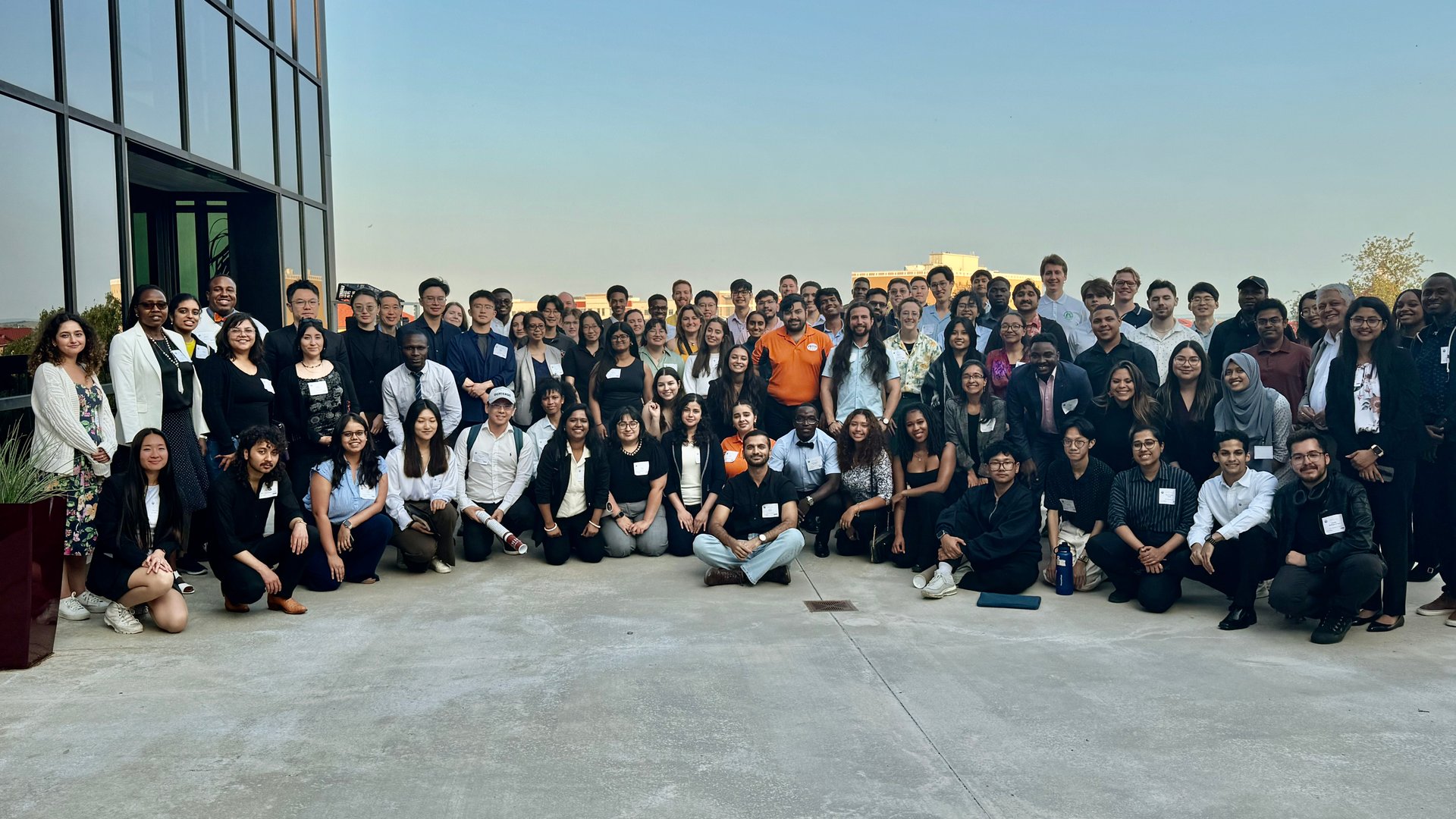In May, close to 100 students from 26 institutions across the United States came together in San Marcos, Texas for the CAMPS 2025 conference.
More than just a scientific meeting, CAMPS—short for Conference Across MRSEC and PREM Schools—has carved out a unique identify as a conference organized by students, for students. In total, 63 participants from PREM programs and 31 from MRSECs attended the conference.
“Not only is the format and content of the conference very student-centered, but it also provides the organizing committee members a great opportunity to develop their leadership and teamworking skills,” says Tania Betancourt, PREM PI for TxState-UT PREM Center for Intelligent Materials Assembly (CIMA).
Conference organizers came from PREMs and MRSECs across the U.S. and worked closely together over a span of months to brainstorm on content, speakers, format, branding, scripts, and everything else that comes with organizing a conference. “Personally, as the faculty advisor, I was very impressed and proud of what they accomplished,” says Betancourt.
Similarly, when asked, attendees praised the conference for its strong organization, seamless scheduling, and balance of academic, industry, and networking opportunities. Many highlighted the friendly, student-focused environment, with well-paced sessions, built-in breaks, and social activities that fostered meaningful connections. The single-location setup, clear pre-event communication, and diverse participation also stood out as key strengths.
The program featured 42 rapid-fire oral presentations and 87 posters, with student research spanning topics from quantum dot assemblies to immunogenic cancer therapies.
“Conferences such as CAMPS provide invaluable opportunities for students to learn about research in a wide range of fields, build their networks among both peers and established professionals, and draw inspiration and reassurance from the experiences of earlier generations,” says Edward Yu, Director of the NSF MRSEC Center for Dynamics and Control of Materials and one of the conference speakers.
“NSF’s support for the conference is a crucial investment in the future scientists, engineers, entrepreneurs, and other professionals in the materials enterprise.”
Hearing from the Experts
CAMPS also featured invited talks from leaders across academia and industry:
Edward Yu (UT Austin), Director of the NSF MRSEC Center for Dynamics and Control of Materials, shared stories from his scientific journey and discussed recent lab work on scalable semiconductor devices and quantum emission in 2D materials.
Rachel Goldman (University of Michigan) discussed her career trajectory and multidisciplinary work across materials science, physics, and electrical engineering.
Melanie Hutnick (Maybelline) offered insights into product innovation and the science behind complexion launches on a global scale.
Zhe Qiang (University of Southern Mississippi) presented research on sustainable polymer systems for industrial decarbonization.
Christopher Copeland (FuturePathsAI) explored the intersection of AI and STEM education.
Camila Saez (Dow) described her work on safe and sustainable polyethylene product development.
Mary Beth Monroe (Syracuse University, moving to Texas A&M in 2025) shared new advances in smart biomaterials for wound healing.
In addition, the student poster session stood out as a highlight of the event, showcasing a diverse range of cutting-edge research from across the country.
Among the many impressive projects were Texas State student Moriom Afiza’s exploration of conductive polymer nanoparticles for photothermal cancer therapy with immune activation.
Charlize Adrienne Agag from the University of Hawai’i at Manoa presented on methods for improving hydrogen storage cycling using modified lithium hydride and magnesium amide systems, while Joelin Ayimaa Agyei-Mensah of Northern Arizona University examined how copper and iron impurities alter the structure of gold nanostructures.
Ananya Chakravarti from Princeton University presented research on the Mpipi-T model, which accurately predicts how certain proteins form droplets under heat stress and reveals that key stress-related proteins are tuned to respond near their organism’s body temperature. Chakravarti won first place in the rapid presentation and poster presentation categories.
Narcedalia Anaya Barbosa from the University of Texas Rio Grande Valley, presented on efforts to optimize the synthesis of nitrogen-doped graphene quantum dots (N-GQDs)—tiny, light-sensitive nanocrystals—for use in biosensors. Barbosa won third place in the rapid fire presentation and first place in the poster presentation categories.
These are just a few examples of the ambitious, interdisciplinary work presented by students at the conference.
Beyond the science, CAMPS offered students networking sessions, panel discussions, and informal meetups that created space for peer exchange and professional growth. The organizing committee’s efforts were evident in every detail—from polished scripts to branding to the smooth facilitation of sessions.
In its 2025 edition, CAMPS not only celebrated scientific innovation but underscored the value of student-led leadership in shaping the future of the materials science community. With its dynamic format and inclusive spirit, the conference reaffirmed its place as a cornerstone event for MRSEC and PREM students nationwide.
